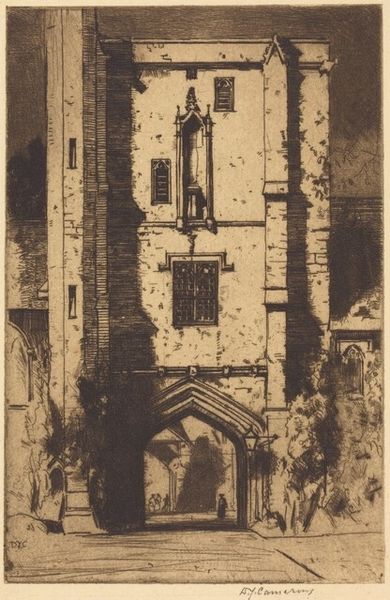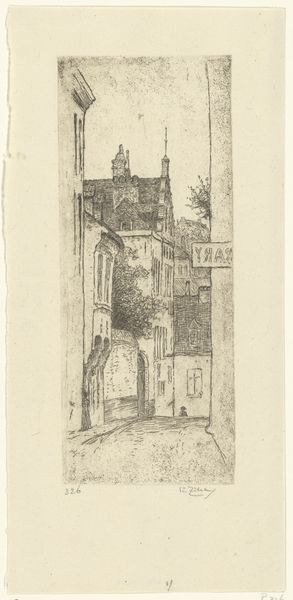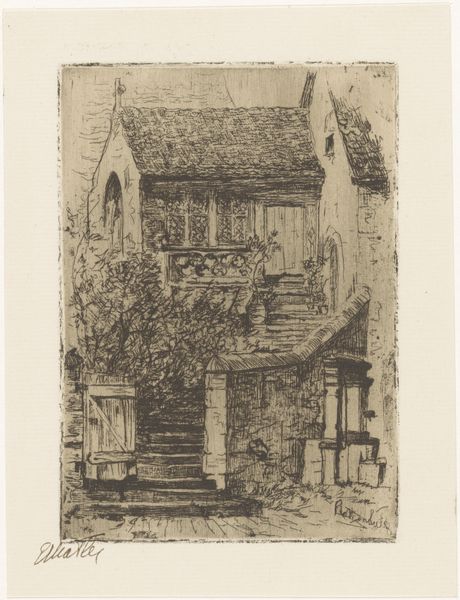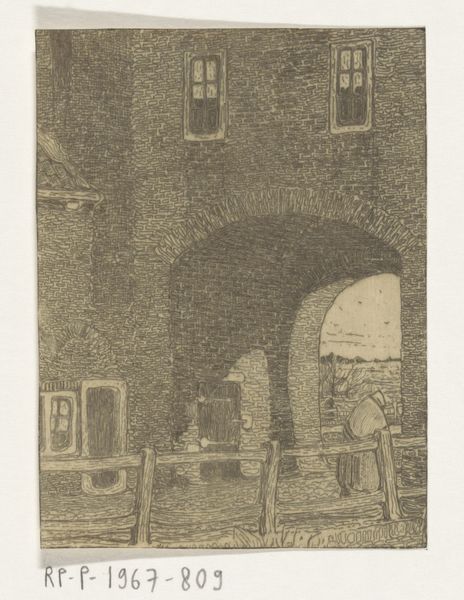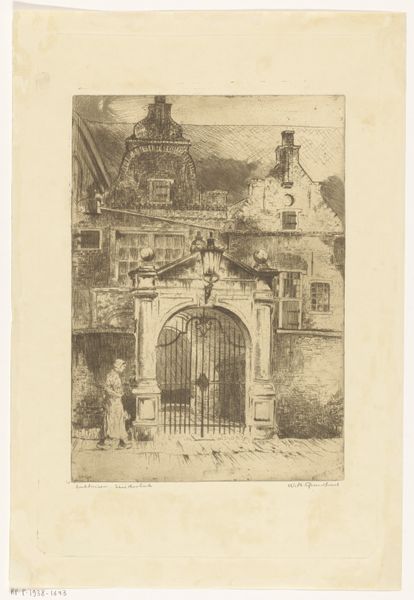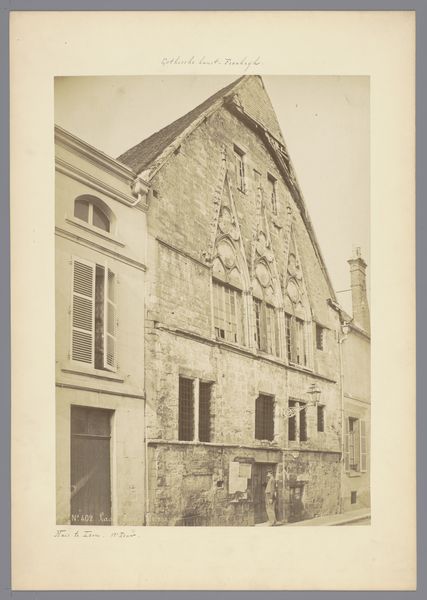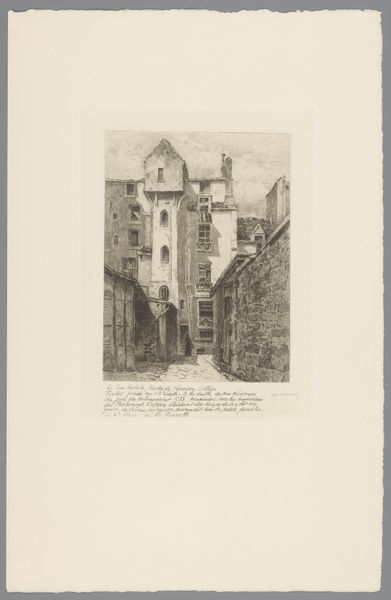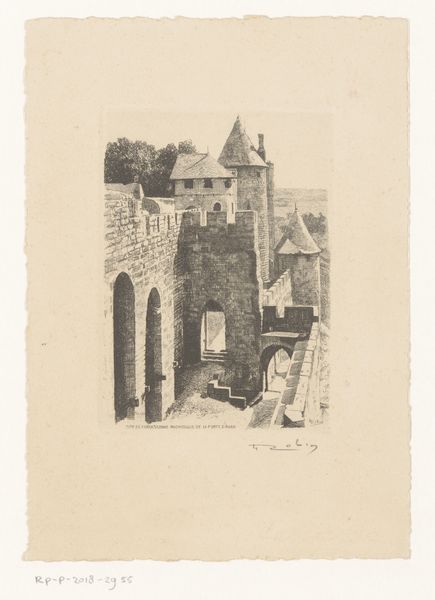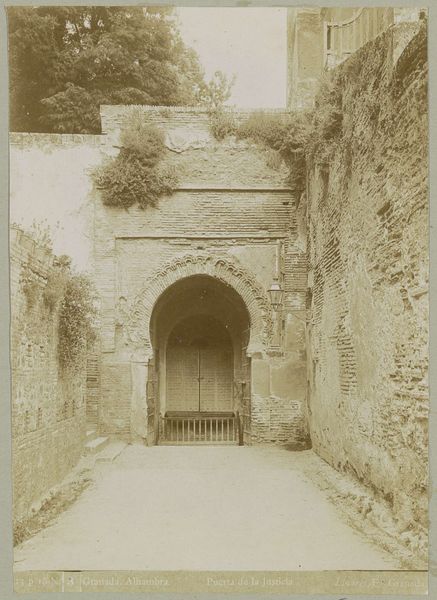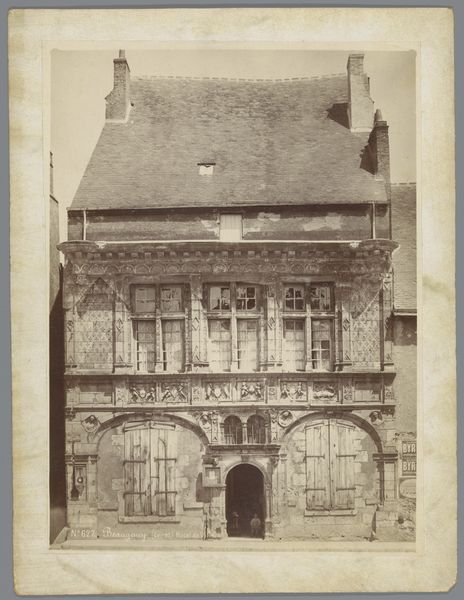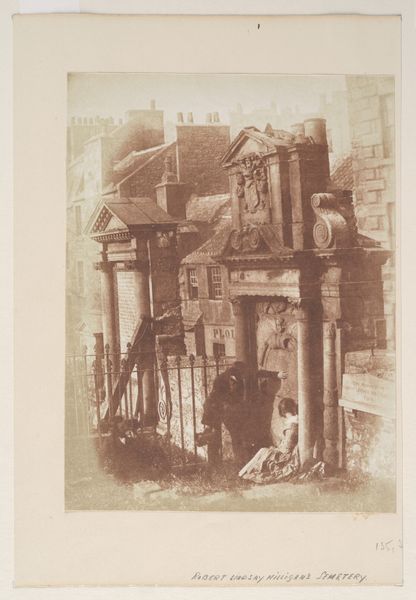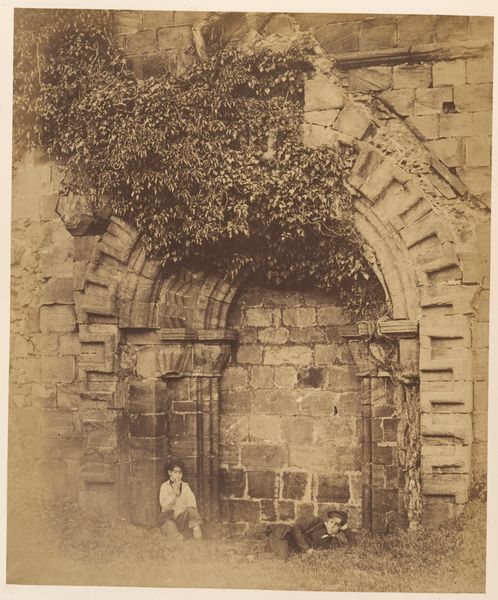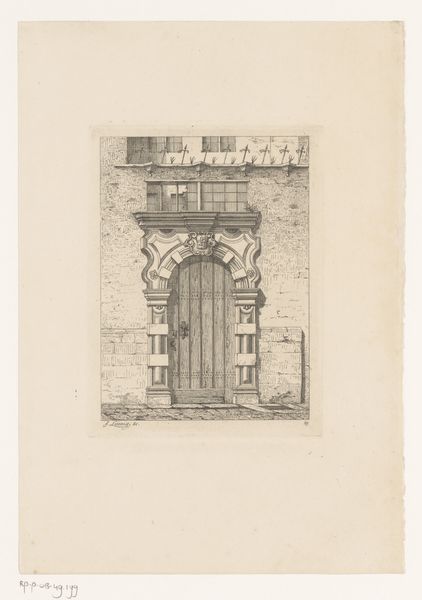
print, etching
#
medieval
# print
#
etching
#
landscape
#
line
#
cityscape
#
realism
Dimensions: height 249 mm, width 180 mm
Copyright: Rijks Museum: Open Domain
Editor: This is "Brugge" by Willem Adrianus Grondhout, a print made with etching sometime between 1888 and 1934. It feels… withdrawn. The muted tones and focus on the architecture give a sense of solitude. What do you see in this piece? Curator: I see an invitation to consider the narratives embedded within urban spaces, particularly in a medieval cityscape like this. How do we unpack the visual language of power, religion, and everyday life etched into these buildings? Notice the doorway, shadowed and imposing; does it function as a literal entry point, or as a barrier, physically and symbolically? Who is granted access and who is denied, and how does this architecture play into that? Editor: I didn't initially consider it as a possible barrier, more just an entrance into the past. What is the story in the lines? Curator: Exactly. Grondhout’s detailed linework gives texture to the stones, visualizing the wear and tear, the built-up histories of this place. I'm curious: does that implied temporality impact how we think about who occupied this building? Could this be an opportunity to imagine how different communities may have moved through, were excluded, or found refuge in the architecture that composes Bruges? Editor: So, it is not simply a visual rendering, but rather a starting point for historical imagining? Curator: Precisely. It makes us question the power dynamics present in even the seemingly mundane structures that shape our environment. And how those buildings influence those who reside and interact in that physical location. Editor: This makes me see the print in a new way. The city isn't just a pretty picture, but a testament of societal standards throughout its changing existence. Curator: Exactly. Thinking of it as a dialogue can make us all question how our spaces function today.
Comments
No comments
Be the first to comment and join the conversation on the ultimate creative platform.
